OpenAI quietly dropped a 34-page technical manual on building AI agents that 99% of people will never read.
I spent 3 days coding every single pattern they revealed.
Here's the practical guide to autonomous AI agents:🧵

Before we begin, let's clearly establish what an agent ACTUALLY is.
AI agents are autonomous systems that take your goal and execute until completion. No hand-holding required.
OpenAI calls it "high independence."
I call it the difference between an assistant and an employee.

Every agent needs three things:
Model (the brain): GPT-4o, Claude, etc.
Tools (the hands): MCPs, APIs and functions
Instructions (the playbook): Clear behavioral rules
Let's build an agent and define each of the above three steps, one after the other.
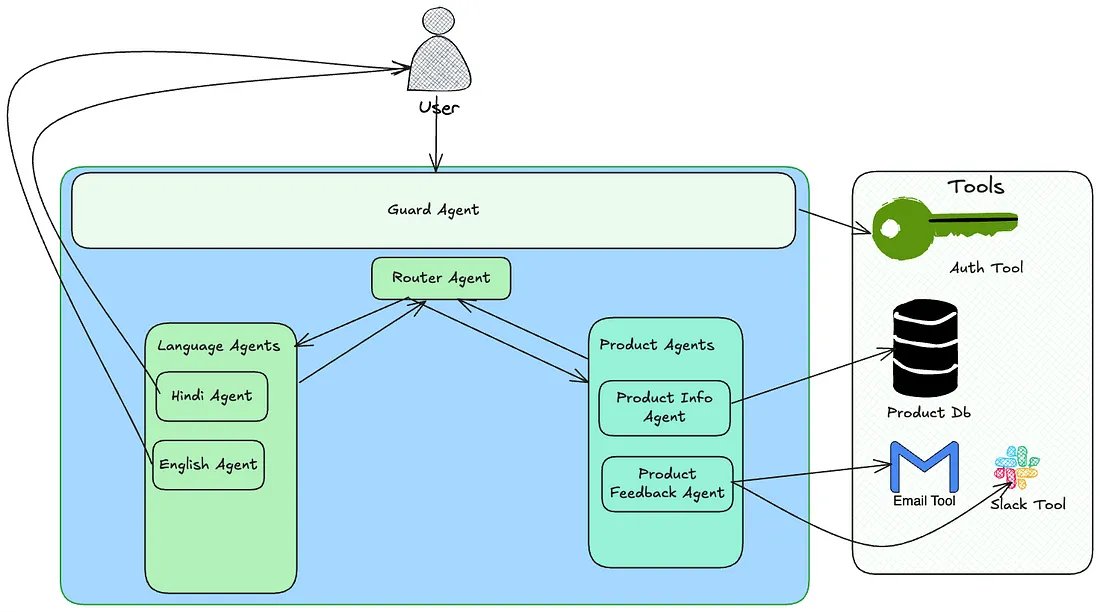
First up, download OpenAI's Agent SDK.

Now comes the part 1: Choosing a model (or the "brain")
To make matters easier, choose a reliable, powerful model when building out your first agent.
But how to evaluate which model fits you the best? Here's how
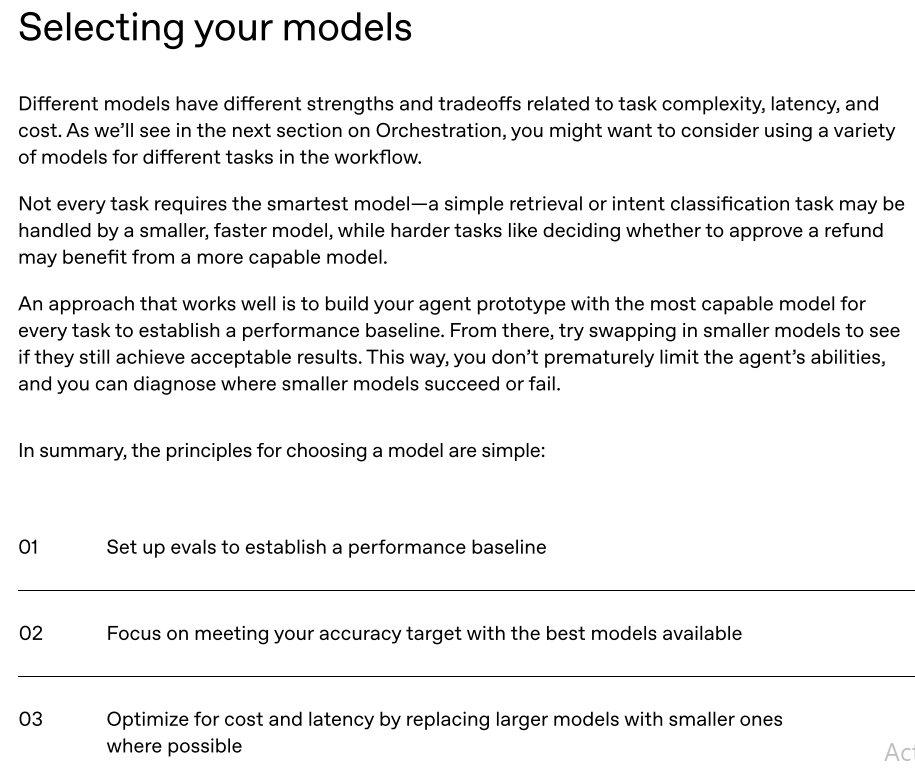
When building out your first ever AI-agent, I'd recommend going with a powerful and reliable model. Say GPT-4o or Claude Sonnet 4.
Once you perfect your workflow with a powerful model, you can introduce a simple conditional to help your agent choose the best model.
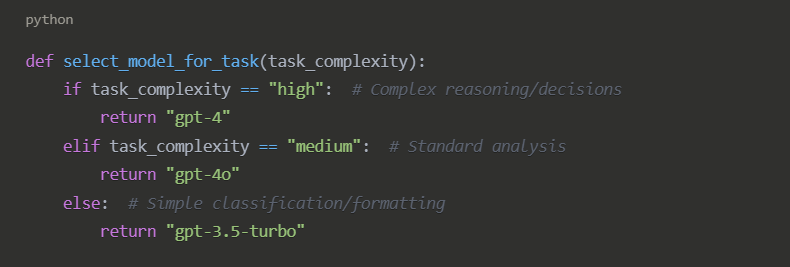
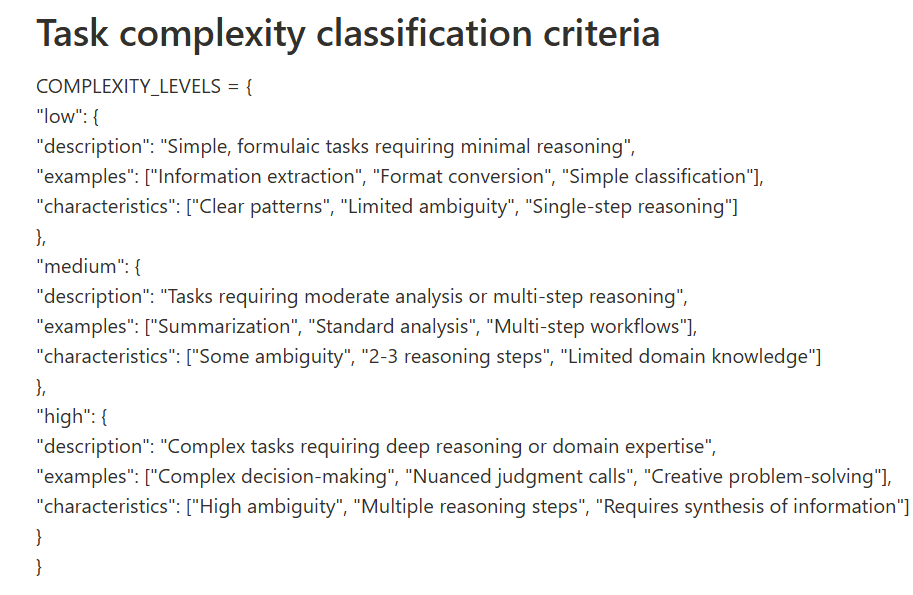
Next comes part 2: Tools.
Every AI agent, including the one you may want to build, would require three types of tools.
1. Data tools
2. Action tools
3. Orchestration tools
Here's how it looks when you incorporate web search tool and function tool into your agent:
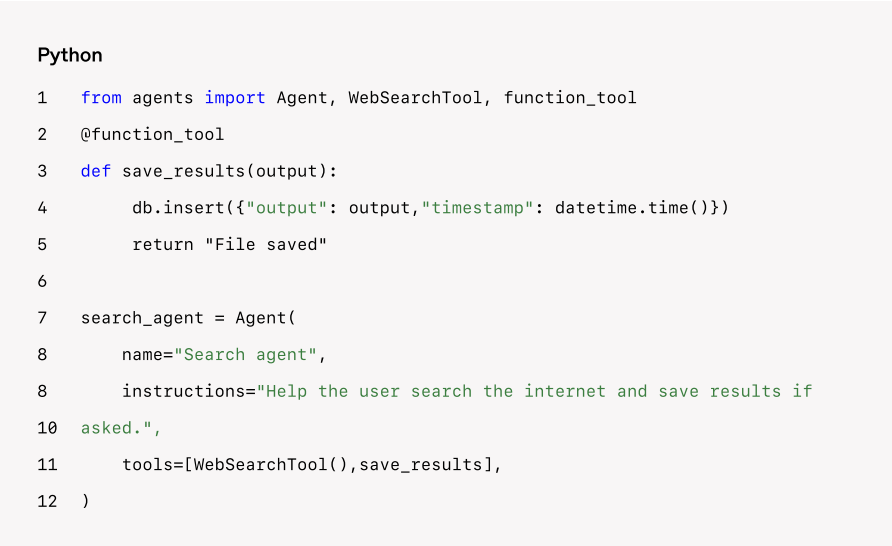
Now, the third and the final part: Instructions.
Clear, robust instructions are a MUST when building agents.
Be specific, clearly define constraints, and account for edge cases.
(You can even ask an LLM like ChatGPT to help you perfect instructions for building an agent)
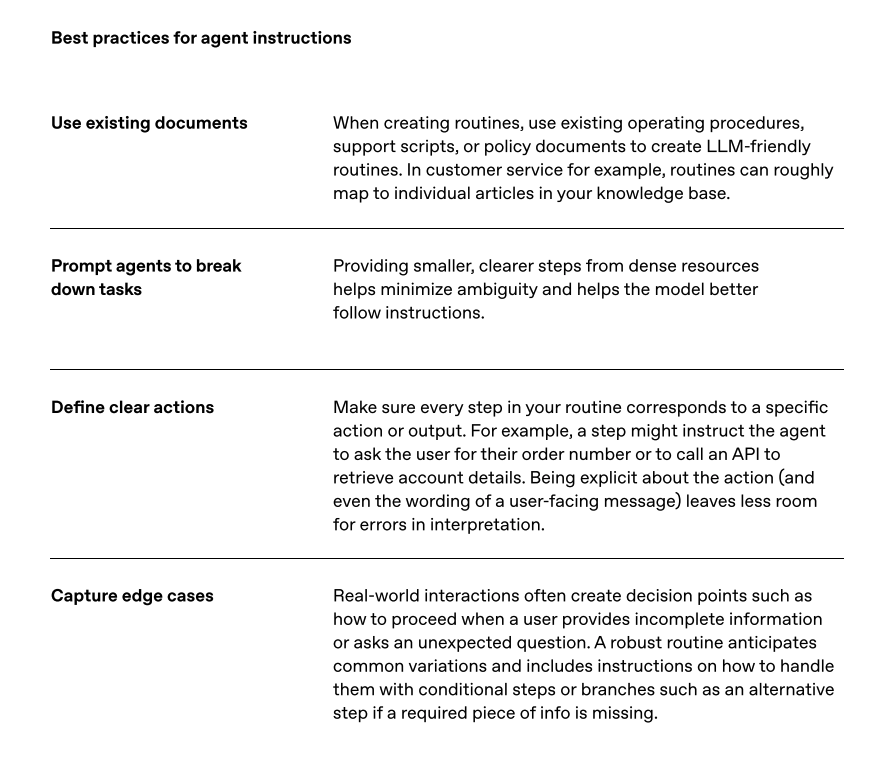
With all three pillars of building an AI agent in place, let's move on to the next level of complexity: single and multi-agent systems.
1. Single-agent System:
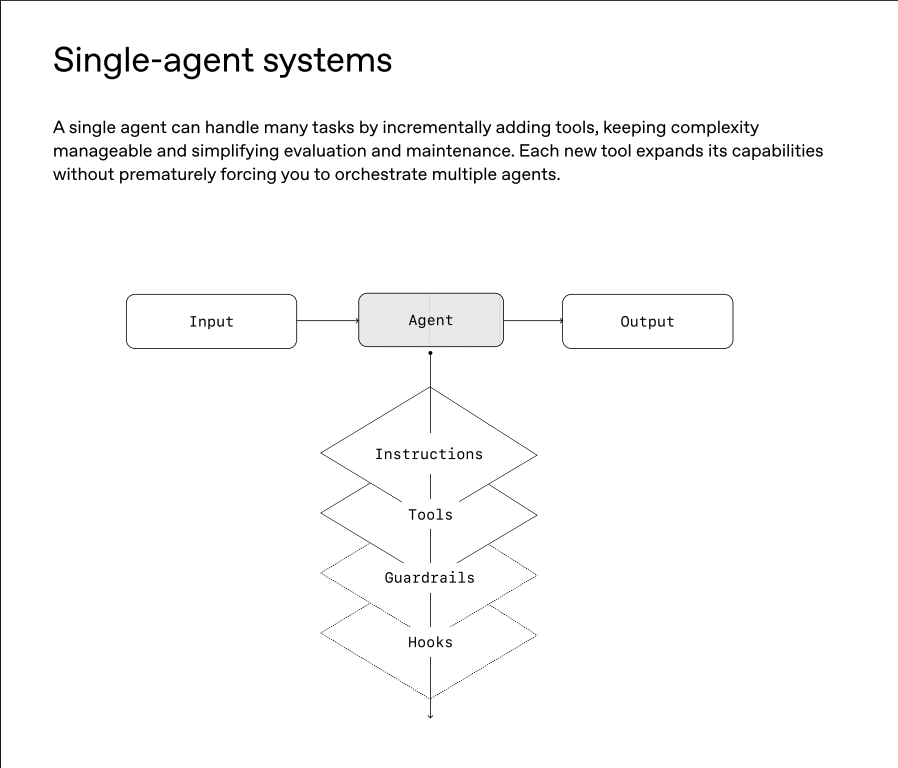
In most cases, OpenAI recommends sticking to single-agent systems.
Their data shows single agents with 15+ tools consistently crush complex multi-agent systems.
Why? Every handoff adds overhead. One focused agent beats five chatting agents every time.
2. Multi-agent System:
While there are many ways to build out multi-agent systems, OpenAI broadly discussed two types:
Manager pattern: One boss controls all specialists:
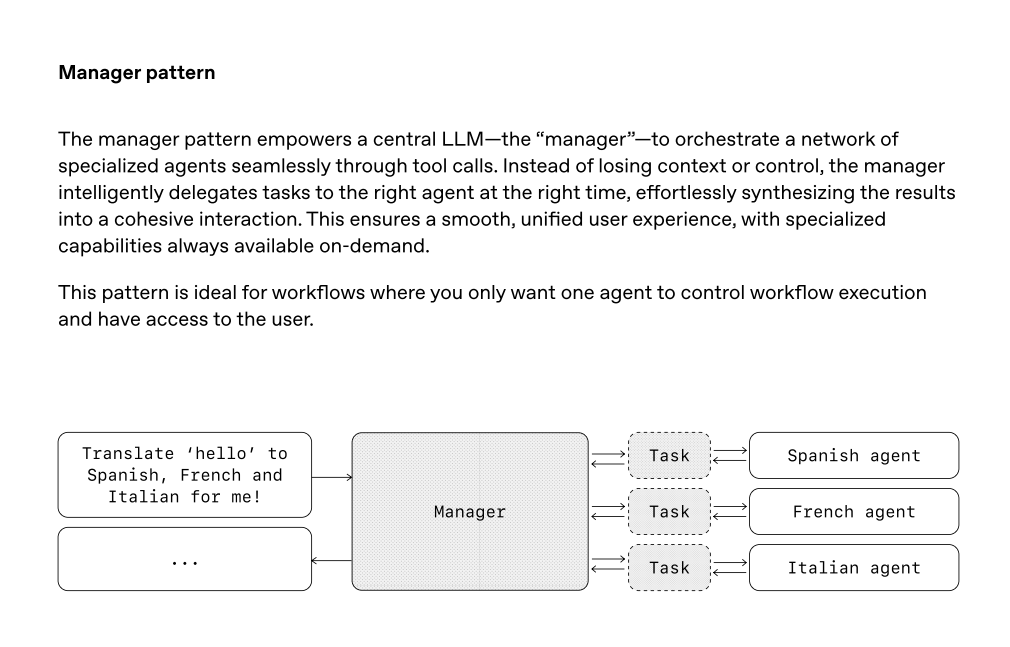
Decentralized Pattern:
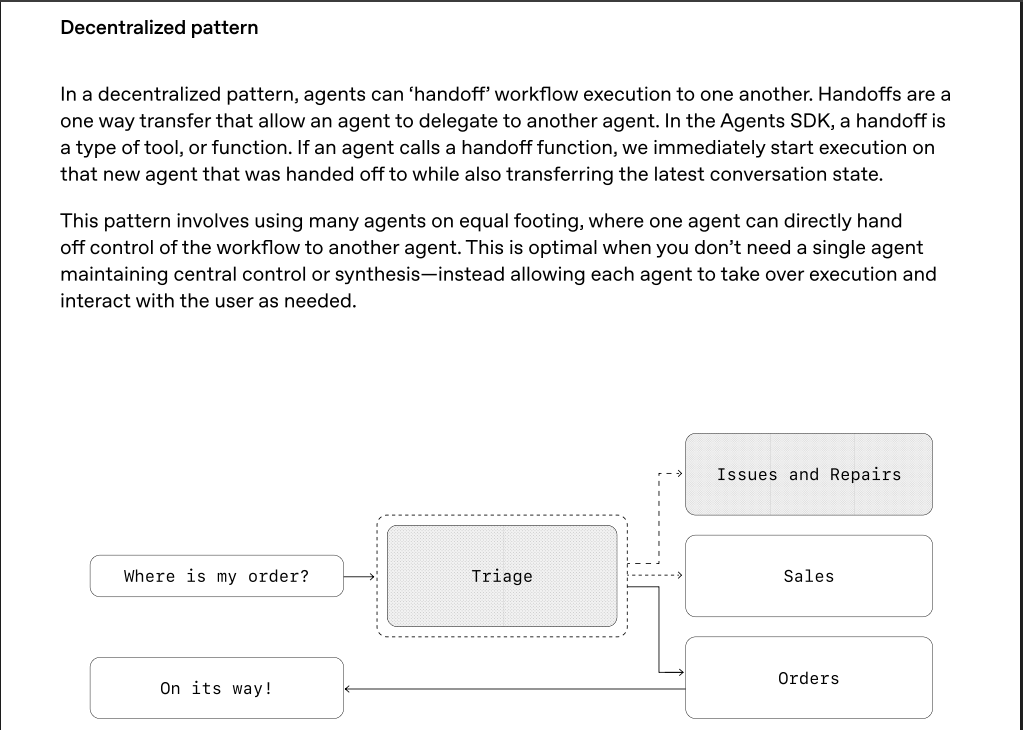
Now, let's put all the above insights together into this experiment:
Building a homework tutor (which is a multi-agent system) for helping with History and Math homework.
So we start with building out the single agent(s) first.

Once you've tested the single agents with math and history problems individually, it's time to combine them both to become a multi-agent system:
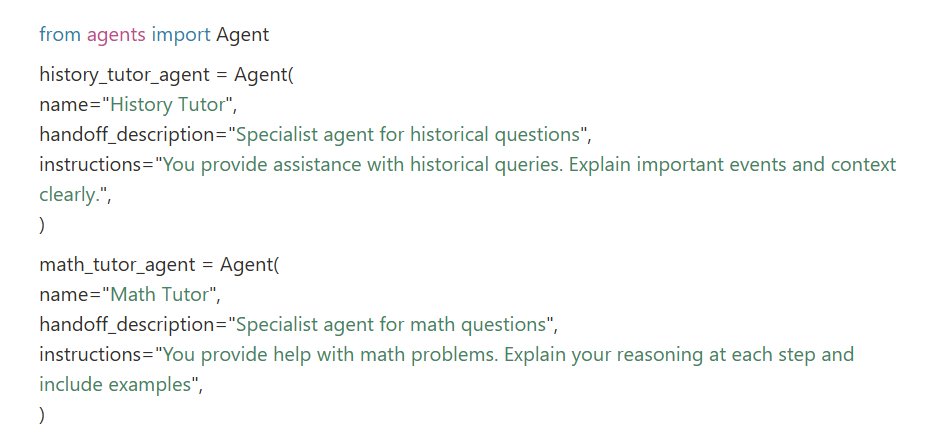
Now when you pose a question to the AI system, this hand-off can help the system determine which agent is best for your use case:

Now, the final step: Adding guardrails.
These are more like firewalls that help manage privacy risks. In this case, our guardrail would be determining if the user is actually asking about homework or not.
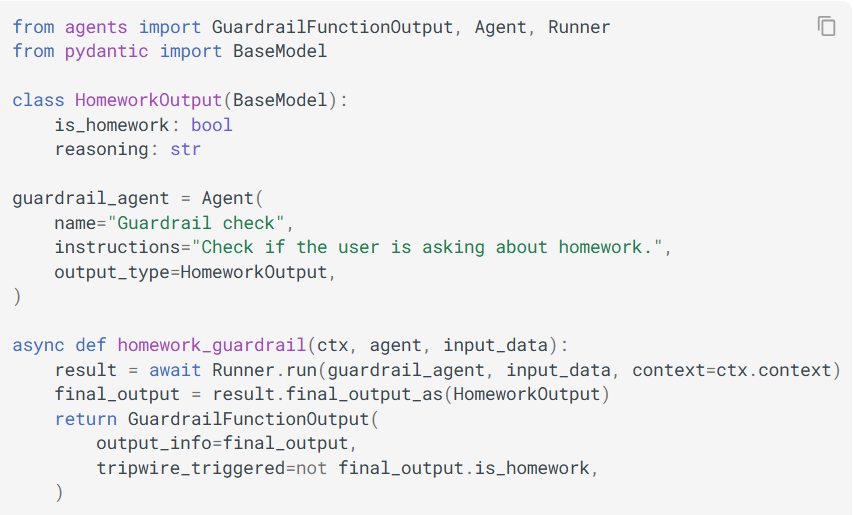
How it all comes together:
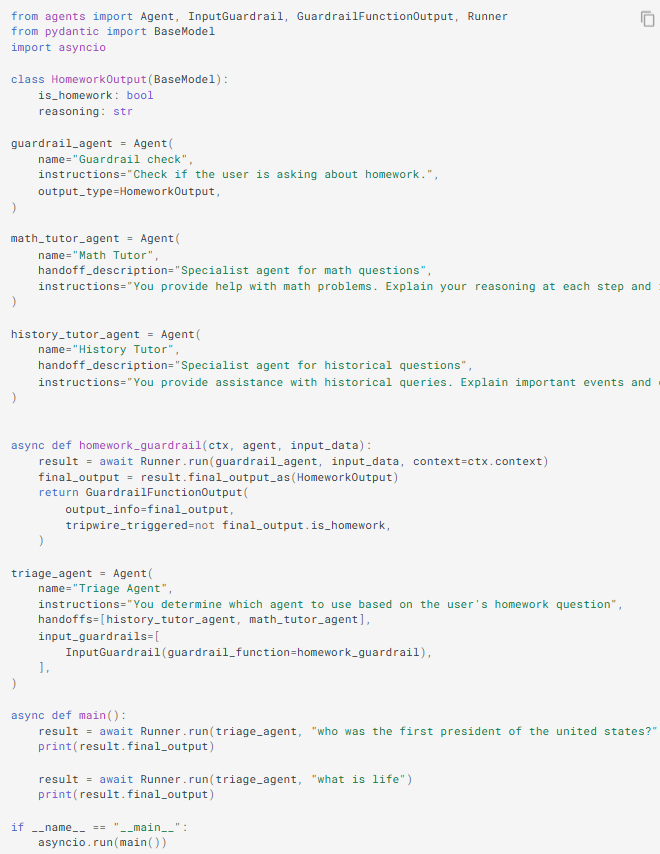
Some more misc tips from the document to keep in mind when building an AI agent:
Pick ONE workflow (not ten).
Build ONE agent (with multiple tools).
Give it tight boundaries.
Expand only when simple breaks.
Lastly, here's OpenAI's number #1 tip to enhance agent productivity:
Human intervention.
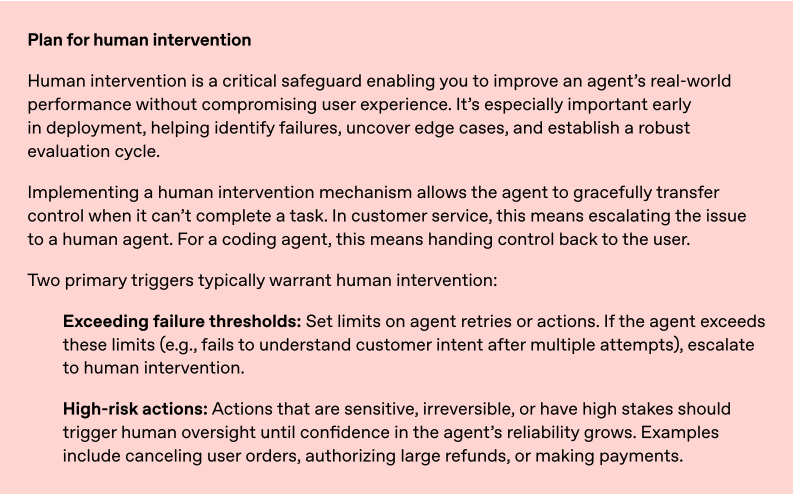
Like and RT the first tweet if you found this thread useful.
Follow me @LoicReco for more threads on SaaS, Indie Hacking, AI, and all things tech & entrepreneurship.


















